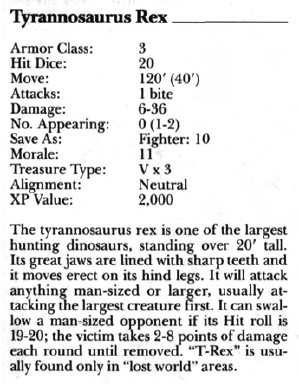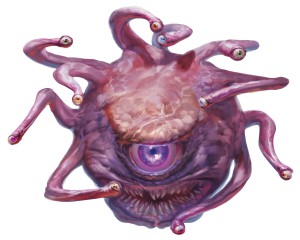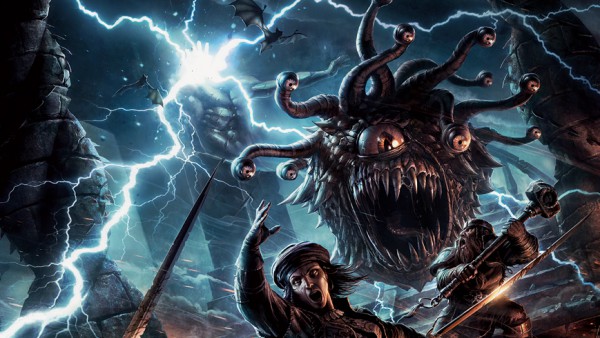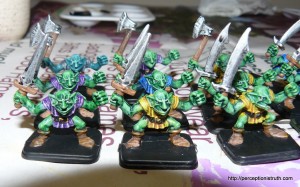
I don’t like dinosaurs in my Dungeons & Dragons and despite them being there from the very start, I know I’m not the only one (I checked).
However, the time has arrived in our 5th edition D&D game when one of the casters has the Polymorph spell, has reached level 8 and so wants to polymorph themselves in to the most powerful beast the spell supports. At the time of writing this post, that beast is the Tyrannosaurus Rex. There are two other CR8 official beasts but one is a whale and the other (from an adventure, not a core rulebook) is a giant crab. So the Rex it is.
Luckily for me, it turns out my polymorphing player also doesn’t like the idea of dinosaurs in D&D. Before I’d broached the subject, he asked if we could do something so that during a fight he’s not declaring that he’ll be turning himself in to a Tyrannosaurus Rex.
As a result of this unexpected good news, I’m reskinning; so in a spark of unoriginality I’m branding all dinosaurs Tyrant reptiles and then adding descriptions or monikers to them. My player is also working up a different physical description to go with the renamed Rex. Maybe, when announced in-game, some players will think doesn’t he just mean the Tyrannosaurus Rex and why isn’t he using that name. That’s fine, for me and my polymorphing player at least, it matters.
I don’t want to just dump all the dinosaurs; for a start, I’d have to find a CR8 beast to make sure the Polymorph spell doesn’t lose potency, but also if the characters ever go to Chult or any adventures set there, I don’t want to be replacing huge swathes of beasts. The alternative I’ve chosen, thinking of new Tyrant names for them, isn’t going to be that hard.
There are other posts online (Reddit for example) with many of these suggestions, and a lot of folk saying “why bother, dinosaurs are fine in D&D“? As I thought about it last night there are really two aspects that have irritated me since I started playing (in the 80’s). Firstly, the names are anachronistic as far as I’m concerned. They’re too scientific, too tied in my head to the Victorians who invented them, and I just can’t separate that out. Secondly, when I was young, I read about the ‘real world’ which had dinosaurs, or I read fantasy books, which had dragons and magic. I didn’t (I’m sure there are some) read any books or watch any shockingly bad TV which had magic and dinosaurs, and so I’m not able to easily assimilate the idea that dinosaurs exist in a fantasy setting. It’s daft, and there’s no good reason for it ultimately, but in my head-canon, Dinosaurs are real, and Dragons are fantasy and D&D is a game of fantasy.
So anyway, here’s a bunch of unoriginal names for core 5th edition dinosaurs based on calling them Tyrant reptiles. Apologies if this unintentionally rips off anyone else’s ideas.
| Dinosaur | Tyrant reptile name(s) |
|---|---|
| Allosaurus | Sharptooth (Tyrant) |
| Ankylosaurus | Whiptail (Tyrant), Tyrant Juggernaut |
| Brontosaurus | Tyrant Behemoth |
| Deinonychus | Sickletalon Tyrant, Fastclaw (Tyrant), Shredder (Tyrant) |
| Dimetrodon | Spineback (Tyrant) |
| Hadrosaurus | Beaked Tyrant, Duck-billed Tyrant, Crested Tyrant. |
| Plesiosaurus | Deep Tyrant, Tyrant of the Deep, Sawtooth (Tyrant) |
| Pteranodon | Crestwing (Tyrant) |
| Quetzalcoatlus | Skywing (Tyrant) |
| Stegosaurus | Plateback (Tyrant) |
| Triceratops | Rhino-tyrant, Trihorn (Tyrant), Triple-Horn (Tyrant) |
| Tyrannosaurus | Tyrant Sovereign, Tyrant Alpha, Apex Tyrant, or just Tyrant. |
| Velociraptor | Tyrant Hunter |
I’m not overly fond of ‘Beaked Tyrant’ (and some of the others are a bit weak) but I may come back and change that one (or more) later. It’s a start.
Edit: All good ideas are inevitably re-inventing the wheel, and someone pointed out to me today this Eberron sourcebook on the DMs Guild which does pretty much exactly what I’ve done here but has a set of different entries.
https://www.dmsguild.com/product/248087/The-Korranberg-Chronicle-Threat-Dispatch



